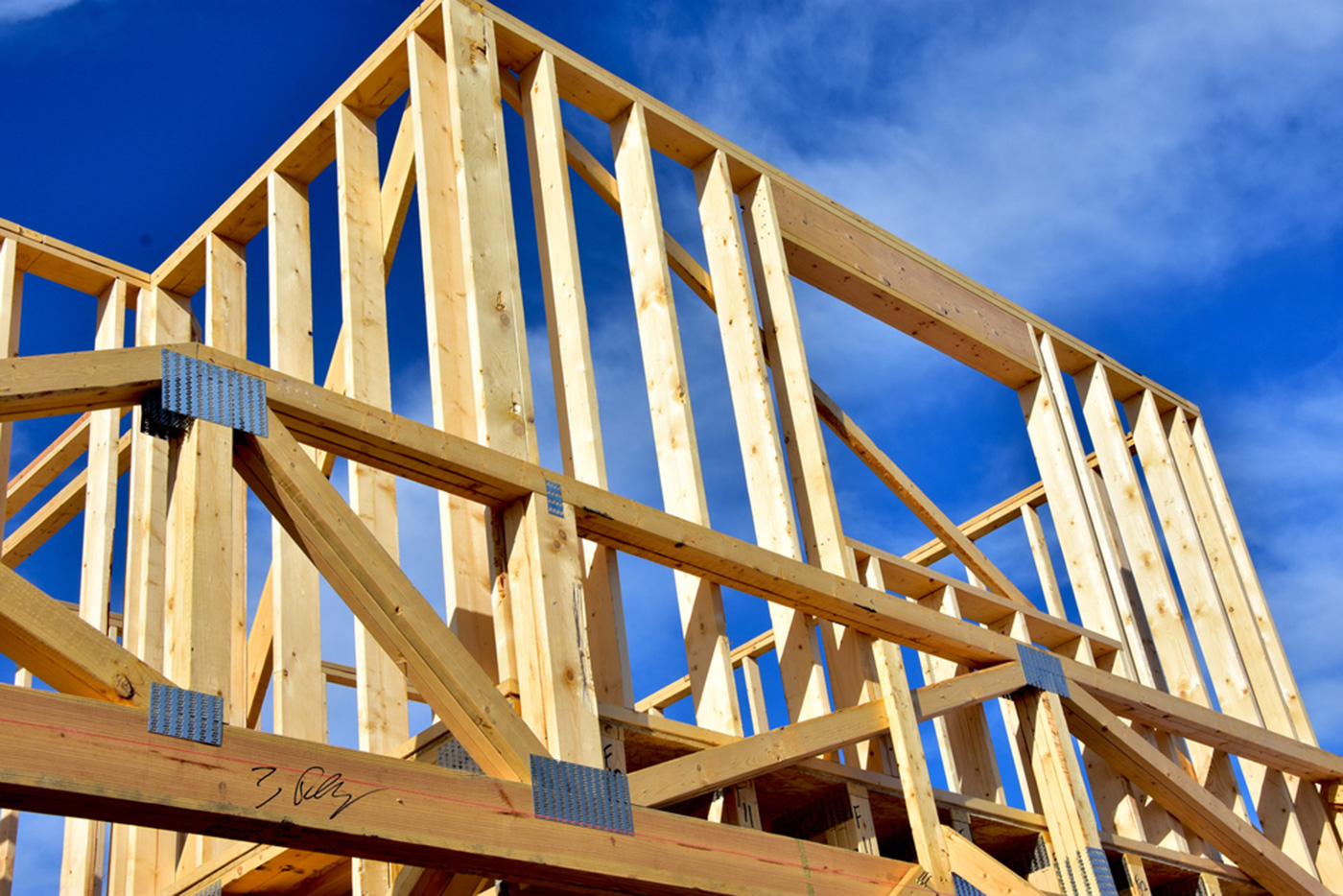Craft
Light stones
Hemp limestones are defined by their low weight, they have a density of about 300 to 400 kg per m³.
CLT construction
Cross Laminated Timber
In situ procedure
"On the spot" procedure
Spraying method
Interaction between team and equipment

CLT CONSTRUCTION
This construction system with cross laminated timber (CLT) panels is used in many types of building projects, from single-family houses to multi-apartment flats. CLT panels are ideal for the rapid construction of the building structure.
This material is suitable for a wide range of façade cladding: Bluestone, mineral plaster and also the attachment of prefabricated façade elements are possible without any problems.
It is recommended to combine CLT with non-load-bearing interior walls and hempstone partition walls to facilitate the installation of electrical wiring. It also allows the construction of buildings with a very low environmental impact.
This construction method also guarantees very high energy performance and is therefore the ideal solution for low-energy and even passive houses.
IN SITU PROCEDURE:
The special feature of this processing method is that the hemp hurds are first mixed with water and the binder on the construction site (in-situ= on site). The resulting mixture is then transported directly to the nearby installation site. To facilitate this, conveyor belts are also used more frequently as a means of transport, although they cannot always provide the required flexibility due to the constant change of installation site.
This hemp lime mixture is then filled and compacted by hand in layers, e.g. in walls, basins and roofs. To guarantee even compaction, the layers should not be higher than 15 cm. (However, if there are special design requirements, this specification can also be deviated from).
For compaction, hemp lime tampers are used by hand; special attention must be paid to corners and detailed formations, because otherwise there is a great risk of missing parts and the subsequent tamping is very time-consuming. With the in-situ method, a team of about three to four people processes between 0.5 and 1 m³ of hemp lime per hour, whereby the installation situation (wall geometry, routes to the mixer, formwork, etc.) also influences this.
The formwork, which has to be placed in advance, can usually be removed after one hour after compaction, when a height of max. 1m has been reached. The time may also vary depending on the construction, but the strength should be high enough to move the formwork after one day.
IIn-situ is defined by a low use of equipment and a high use of personnel. Therefore, this method is suitable when only a small amount of hemp lime is to be processed.
TTypical application areas for in-situ projects are:ypische Anwendungsgebiete für In-Situ-Projekte sind:
- DIY projects
- workshops
- smaller building projects
- Annexes or extensions
According to Berlin architect Roger Dauer, the drying time for manual application is at least one month.
SPRAYING METHOD:
The spray processing method is recognisable by the low use of personnel and the increased use of machinery. Just as with in-situ, the mixture is prepared on site in a hemp lime mixer. Here it is necessary to match the capacity of the mixer with that of the spraying machine and the air compressor. The required capacity can be found in the manual of the spraying machine.
The supporting structure is a wooden framework that transfers the loads to the building ground. Hemp lime is therefore also particularly suitable for the renovation of old half-timbered houses. The positive structural-physical properties should be pointed out at this point.
As with the in-situ method, a formwork must also be made beforehand. On the one hand, this can be assembled using formwork elements or boards. On the other hand, it is also possible to make a lost formwork with hemp lime bricks, whereby one side of the wall is already completed by the bricks and can be plastered or otherwise clad directly. In general, it is very important that the formwork is firmly screwed to the wooden structure before you start spraying. However, whether the formwork is mounted on the inside or outside of a wall depends on several factors.
The spraying system has a throughput of about 6 m³ of hemp lime per hour, which exceeds the output of the in situ process by a factor of ten. The interaction of team, which can be reduced to three people, and equipment is crucial for the successful implementation of the spraying technique.
It is particularly needed for large-scale and professional applications where speed and cost efficiency are relevant.
Manual tamping is no longer necessary with this technique, as the pressure of the material application immediately compacts the hemp lime mixture. Much less water needs to be added, which also shortens the drying time. According to the Berlin architect Roger Dauer, it only takes at least ten days with machine application.
IMPORTANT TO NOTE
- The temperature during bricklaying must not be less than 5°C and not more than 35°C.
- In dry and hot conditions, the hemp limestones must be sufficiently protected and must have a constant level of moisture
- Hemp lime has only a very low load-bearing capacity, which is why a supporting structure made of wood or concrete must be erected
